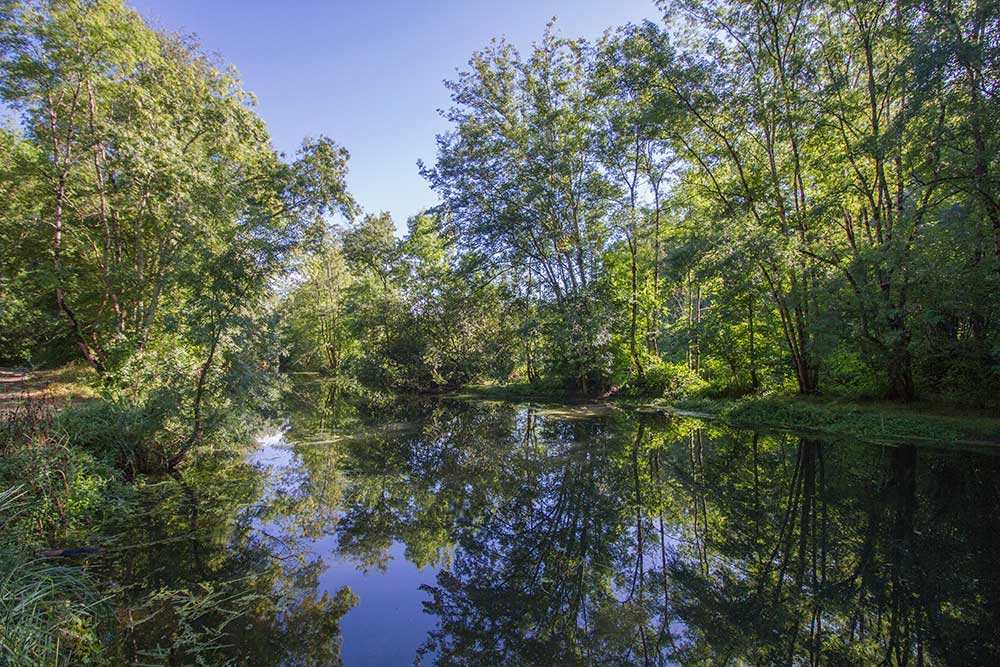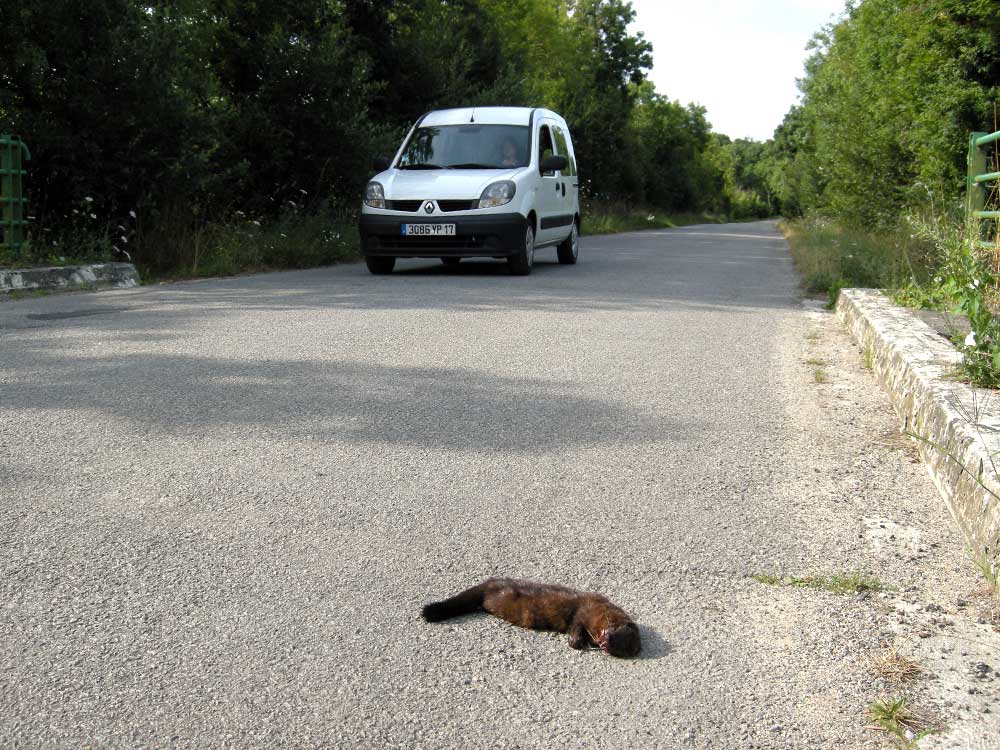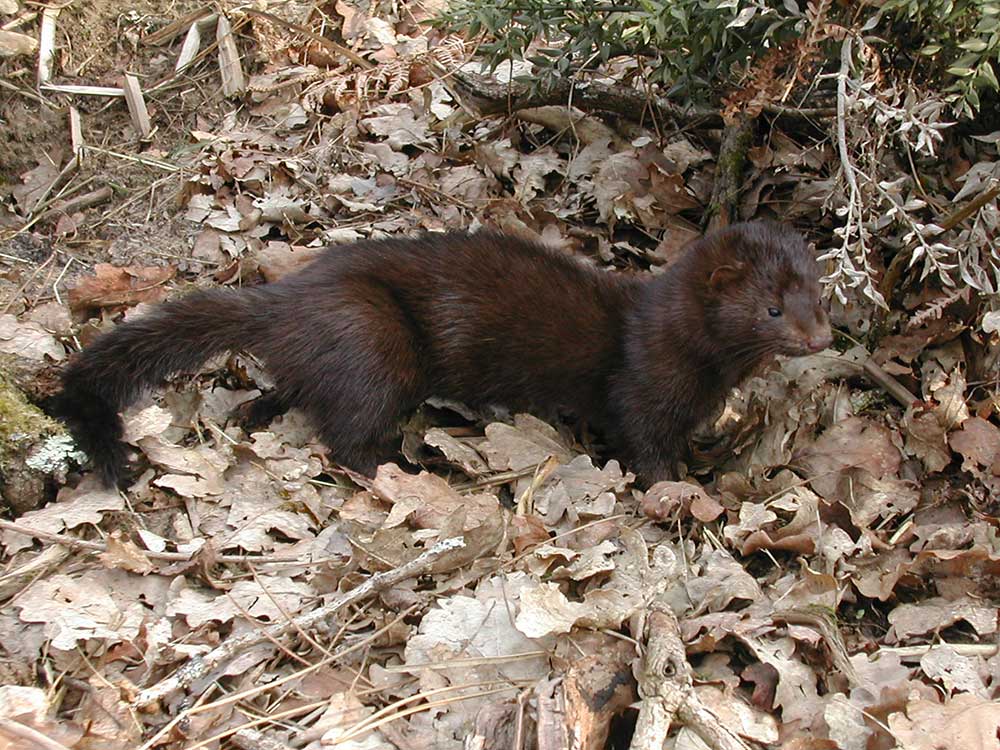Threats
Destruction, degradation and fragmentation of its habitats
The European mink is highly dependent on the wetlands which have critically decreased in quality and quantity during the 20th century. The conversion of wetlands into agricultural land and degradation of the water quality have resulted in the disappearance of the resting, breeding and feeding areas, and also in the decrease of prey available. These factors have had a dramatic impact on the population of European mink.

Riverside woodland, the European mink habitat (© Alexis Orseau / LPO)
Road casualties
Linear infrastructures and in particular roads are a major obstacle for the movements of the European mink. Due to increasing traffic, road casualties are more frequent especially during the breeding season. Indeed, because the European mink population density is low, they travel large distances to find a partner resulting in a higher collision risk.

Mustelid victim of a road collision (© Philippe Jourde / LPO)
The American mink
The American mink was imported into France at the beginning of the 20th century for the commercial value of its fur. Escaped animals have since colonized the river system of several regions. It is a threat for the European mink, not only because they use the same habitat, but also because of the confusion between the two species by trappers and the risk of disease transmission.

American mink (© Marie Liabeuf / LPO)
Pathogens
The Western European population is characterized by a very high genetic homogeneity resulting in a higher exposure to diseases. Aleutian disease, present in the different Mustelid species and probably spread by the American mink, has a limited impact on the European mink population. Canine distemper, on the contrary, may be at the origin of its decline. This fatal disease affects an important number of carnivorous populations and thus is a threat for the species.
Other threats
The confusion between the American mink and the European mink during pest control trapping sessions may have contributed to the decline of the latter in recent years.
Secondary poisoning due to the use of anticoagulants also exists, but the regulations have evolved to reduce the impact on the species.
How is it protected?
The European mink is one of the most threatened species in Europe and in France. It is classified as « critically endangered » according to the IUCN’s (International Union for Conservation of Nature) Red List of threatened species.
The protection of this species is regulated at three levels:
International
The European mink is listed among the species strictly protected on the Bern Convention (annex II).
LIFE Vison
The European mink
It is a carnivorous mammal belonging to the Mustelidae family. It is classified as “critically endangered” according to IUCN’s Red List of threatened species.
Beneficiary coordinator

Associated beneficiary

Partenaires financiers

With the financial support of

Contact
LIFE VISON Project Coordinator
Ingrid Marchand
Phone :
+33 5 46 82 12 45
Adress
LPO – Les Fonderies Royales
8-10 rue du Docteur Pujos
CS 90263 – 17305 Rochefort – France
